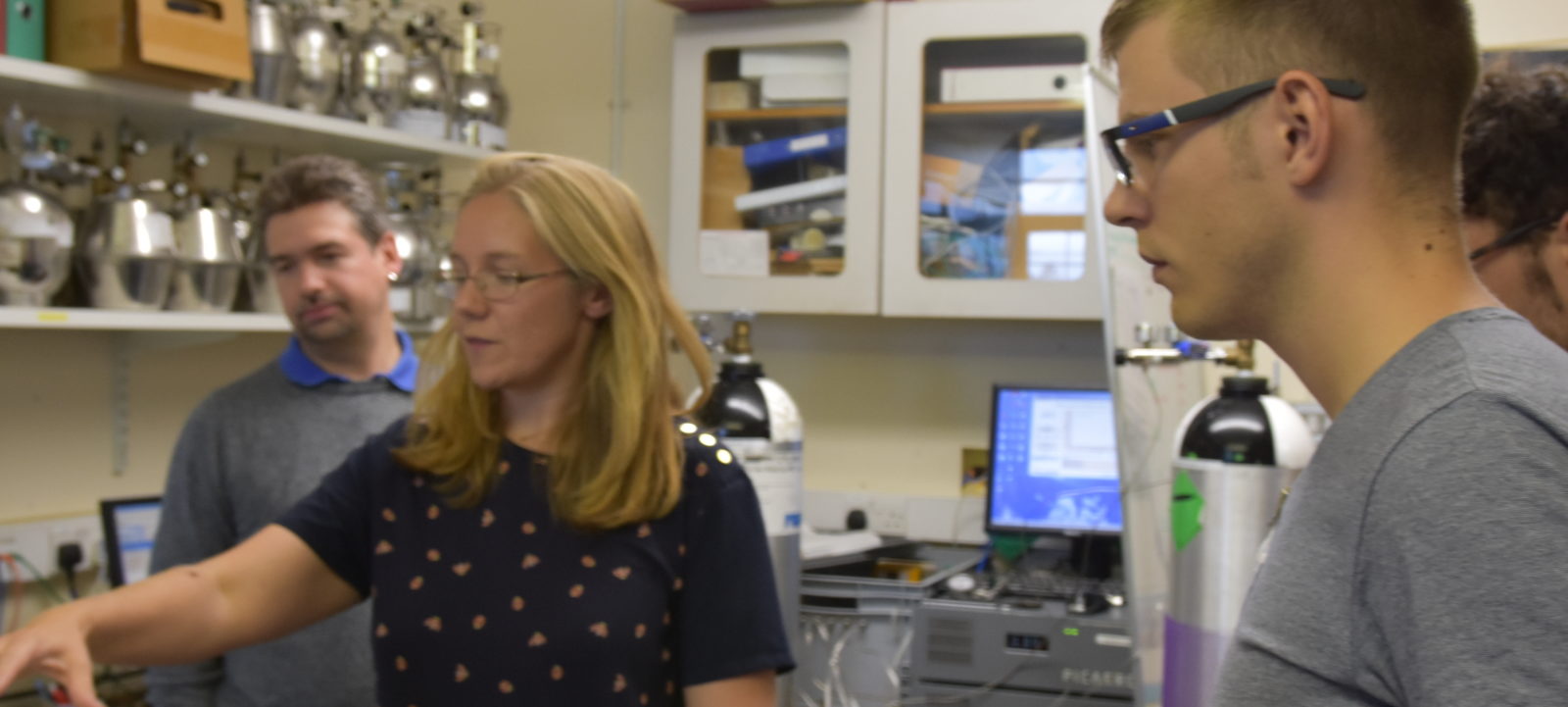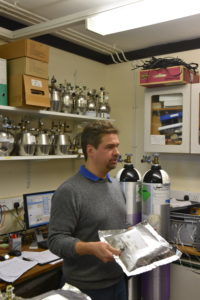Blogs
How to identify sources of methane – workshop on isotopes
If you want to know where your methane is coming from, you can measure the isotopic composition of the molecules. The isotopic composition is like a fingerprint, you can distinguish between methane coming from e.g. human activities, from cows or natural gas. It is even possible to distinguish if the natural gas is originally coming from the North Sea or from another region, or if we have overlapping sources with different isotopic compositions, e.g. such as cities.
Within MEMO2, we would like to provide novel EU wide isotopic source signature maps, which will give input for the use of isotopic information in atmospheric models. The link to sampling methods and modelling will allow identifying possible vertical as well as horizontal variability in isotopic signature in emission plumes. By this the measurements and models will contribute to the new European CH4 emissions map, including isotopic information.
However, this requires precise measurements, the knowledge of how to interpret the data and how to implement them into the models. So RHUL organised a workshop on “Isotope measurement techniques and data interpretation”, held from 17 to 19 September 2018 in London.
The aim of the workshop was to introduce the topic in more detail, not only for the ESRs sampling and measuring isotopes, but also for those who will implement isotopic data in their models. During the workshop they got a general introduction about isotopes, their characteristics and behaviour in different environments, and measurement techniques such as IRMS (Isotopic Ratio Mass Spectrometry).
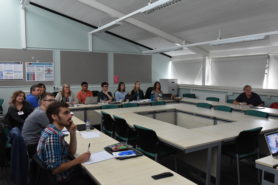
Learning the theories and …
|
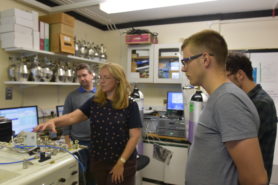
… how it looks in practice! Rebecca Fisher explaining how the Trace Gas inlet system converts methane in air to CO2.
Tedlar bags for isotope sampling. |
They learned about sampling, and discussed how to interpret isotopic measurements from mobile measurements and how to define the suitability of data being incorporated into models. As just learning in theory is mostly boring, the ESRs were tasked with collecting samples of methane sources from the RHUL campus.
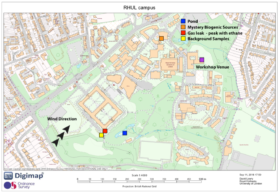 |
|
Map of the campus, exercise to find and identify CH4 sources |
The methane isotopic rations of the samples were then measured and the isotopic signature of the sources calculated. By this the ESRs identified a “gas leak” and a pond within the gardens as the main sources. During the last day participants were introduced to regional, global, and temporal modelling of methane isotopes, again including a practical part to exercise using simple box modelling.
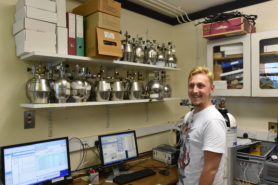
Happy to start measurements! |
 |
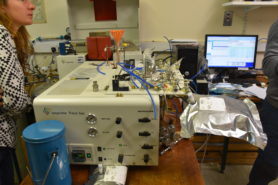 |
 |
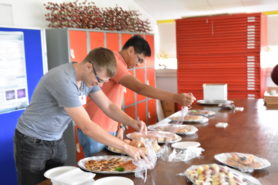
Lunch preparation |

Joint sightseeing |
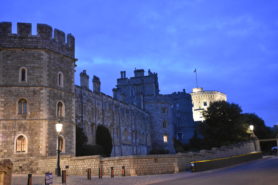
Windsor castle at night |
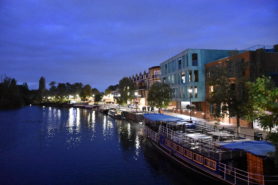
51°29’09.2″N 0°36’30.1″W |
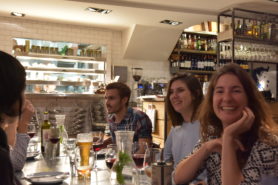 |
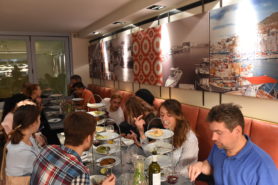 |
Joint dinner in Windsor.

